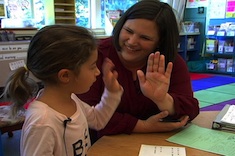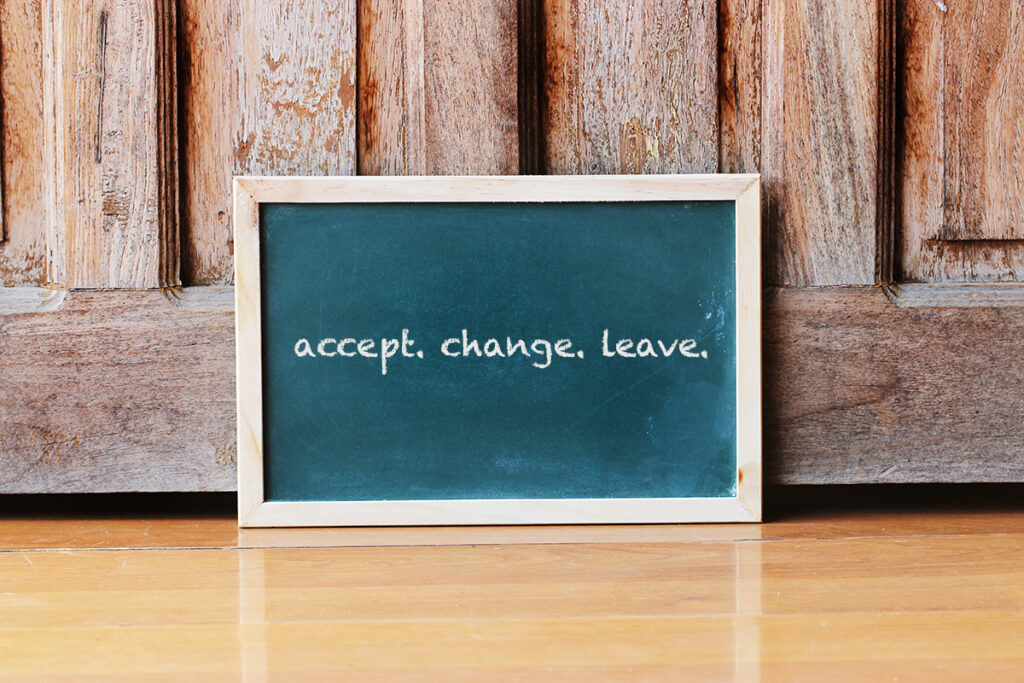There are other types of conferences that we do
most of the time that includes the research, compliment, teach, link -
but for this student, the teacher knew this was what she needed most was
compliments to keep her working towards growing as a reader.
Camilla sorts her book bag, and a frown stretches across her face as she slides books out and tosses them to the side. Her shoulders slump, and she looks out the window. She opens a favorite Elephant and Piggie book and flips pages, looking across the room and trying to make eye contact with a friend. She moves books into stacks and then spreads them out into a fan. She gets up and goes to the bathroom and returns. Sighing, she picks up a book and begins flipping pages.
I lean in and whisper, “What are you working on today?” She shrugs. I smile and reach over. “Which Elephant and Piggie book is that? Did you find a funny part?”
She’s not returning my smile. “It’s too hard. I get stuck.” She skids it across the carpet and back into her book box.
I try a different approach. “Tell me about your strengths as a reader—what can you do now that was hard back in September?”
She flips a few pages and sighs, and we sit together in the silence, thinking. “I can stay in one spot. My eyes are in the book.”
I smile at her honesty. “Those are great strategies that support your stamina!” Internally all of my alarms are going off. Why haven’t I noticed her quiet disengagement? Why has she stopped taking risks? Why isn’t she interested or engaged in any of these books?
She has recently filled her book box with selections from our read-aloud shelf—most of which I have read with the class many times. She has several engaging books with strong patterns that offer support: Pete the Cat, No, David! and Fortunately, Unfortunately. She has a book bag inside her box filled with Danny Books and emergent fiction and nonfiction books she selected, most of which we have read together. When she pulls one out, she can’t remember it and tells me, “This one is really hard.” I ask her to pick another, and she sighs, pushing the bag away. “I can’t read. These are all too hard for me. I can’t read anything here.” She leans over and melts into the floor, and my heart grows heavy. Why haven’t I noticed how negative her self-talk has become?
Camilla felt stuck. Her letter-sound knowledge was strong, and she was previewing books by talking through what she noticed in the pictures. She could notice and follow the repeated pattern in a book and then guess at the changing word using the pictures for help. Often she stumbled over sight words, and if she couldn’t unlock the pattern within the first attempt, she would stop reading and put her head down. With an adult at her side she would try a strategy, if she was reminded. She would ask parent volunteers for the word or freeze up and wait for rescue. She avoided disequilibrium and abandoned books she was interested in because they had too many tricky words. I was increasingly worried about how long she remained stuck on this plateau in her progress, and alarmed by her growing disengagement.
Camilla reminds me of when I was learning to roller skate. I spent the first hour of every trip to the rink circling and gripping the wall, tiptoeing inch by inch around the rink. I would not let go and risk falling down. The longer I circled, the more aware I became of the skaters zipping around me, flipping forward and backward. They made it look so easy. The longer I watched, the more convinced I became that I would never get it.
Camilla was spending the bulk of her independent reading time looking around at the other readers, holding books, flipping pages, and looking back at her book if she caught me watching her. She sat quietly with her reading partner and let him do the reading and talking as she stared at others or out the window.
Who is Camilla as a reader, and what is interfering with her growth?
I looked over my conferring records and her reading goals/strategies chart. I would listen in on her reading and offer a compliment, and she would smile. She relied on the pattern to get her to the next page, matching word to word but with little interest in the content. As I listened, she would stumble on a word and then freeze. She would look to me, and I would point to her strategy chart and ask, “What could you try?”
Her shoulders would slump. “I don’t know.” I would prompt, and she would make an attempt, and sometimes another. I would name a strategy and give explicit instruction, and support her continued attempts. Then I’d encourage her to keep using the strategy as I worked with other readers. From my next conference I would look up and see her shuffling books and staring out the window.
I consulted assessment guides and made a list of the text features and reading behaviors that were changing between levels and added a list of strategies I had taught or we could try. At this sticky spot in her reading journey, the texts have fewer language patterns, so readers must use meaning and syntax to decode words. It is that letting-go point when the skater who has been clinging to the wall pulling himself around hand over hand must let go and trust himself to glide and balance, or fall and learn to pull himself back up again. To grow, Camilla had to be willing to take risks.
I started listening more closely to her self-talk throughout the day. I can’t. That’s too hard. They don’t like me. Nobody will sit with me. I’m not smart. I don’t know anything. My head/arm/leg/ankle/finger/toe hurts. I’m too tired. She had a million reasons for avoiding tasks that made her feel unsuccessful. Throughout the day she reminded herself of her inadequacy and believed each new strategy or teaching point confirmed her inability to change or grow. Camilla saw text as the source of meaning and herself as incapable of understanding. She did not yet know that her own thinking and meaning-making were the very center of understanding.
It became critical for Camilla to learn to trust her own thinking. I needed to spark her interests and empower her to notice and name her capabilities. I wanted to give her evidence of her growth, and the confidence that comes from repeated success. She was already reading, but she didn’t believe it. She felt weak and wobbly, intimidated and overwhelmed by the readers who were flying past her. I had to help her feel strong and safe enough to take the risks necessary to grow. She needed to understand what she was already doing well so she could move forward from strength.
What makes Camilla feel successful as a learner?
I looked for her strengths and noticed Camilla was highly engaged in read-alouds, and loved listening to and thinking with other readers. She often whispered insightful observations to her partner and shared a connection she had made after the class walked out to recess. I saw how wistfully she looked at new books added to our library and knew she longed to read them.
I watched to see which books she found most interesting and noticed she was drawn to humorous books and familiar characters. She liked the comfort of predictable patterns, and would seek out circle stories like If You Give a Mouse a Cookie to retell again and again. She found Who Am I? and liked that she could use the question/answer pattern and supportive rhymes to predict the text and guess the animal under each flap. Camilla began reading and rereading it daily.
When conferring with Camilla, I noticed that if I gave a specific compliment and named the strategy she was using or approximating, she would light up. If I continued conferring and suggested a specific strategy, she often deflated. I started to wonder if my teaching points felt to her like something else she couldn’t do yet.
What happens if I only compliment her efforts?
I intentionally created several positive interactions with her every day. I noticed something specific she was doing that was helping her grow as a learner and then pointed it out to her, smiled in appreciation of her effort, and walked away.
I shared her writing with the class and noticed how breaking the pattern surprised and satisfied the reader. I asked, “Who is inspired to write a surprise ending like Camilla?” Hands shot up around the room, and Camilla beamed. I noticed her math thinking and announced, “Mathematicians, Camilla has such a worthy question! Camilla, can I tell them about the great thinking you were just doing?” I waited for her nod. “She asked, ‘What is changing?’ That is a very important question mathematicians need to ask themselves in problems like this!”
Our reading conferences changed dramatically. After sending students off to read, I sat next to Camilla and held a compliment conference. Listening next to her I would notice a strength, explain how her thinking supported her reading, and then encourage her continued effort, engagement, or growth. It took a minute or two, and then I moved on to another reader. If I saw her looking down or out the window, I would circle back and compliment another strength I observed to pull her back into her reading. The hardest part was keeping my language precise, walking away without teaching or giving a tip, and giving Camilla opportunities to keep working independently without reminders. When I arrived at my next conference, I would look back to check, and often she was still reading.
Here are some examples of compliment conferences I used with Camilla.
Notice a strength
|
Name how the strength supports reading & thinking
|
Encourage continued effort, engagement, or growth
|
| I noticed how quickly you got started reading today! | By getting started fast you are giving yourself the gift of extra reading time to grow. | You must feel so proud that you can begin our workshop reading independently. |
| Did you see what you just did there? You came to a tricky word, and the first time you said “ship,” but then you paused because you noticed that didn’t make sense. You backed up and read it again slowly: “police.” | You are monitoring meaning and making sure you understand everything you read. | You are really working hard to make sure your reading makes sense. |
| Oh wow—you just read the first sound, and then you checked the picture. Then you reread it to make sure it makes sense. | You are thinking about the words and the pictures and making meaning when you read. | That’s really important work you are doing. |
| Do you remember when that used to be hard for you? Now you are looking at all the parts of the word, saying each part slowly, then sliding through the whole word. | By using a strategy and thinking about what makes sense, you are figuring out more tricky words. | Oh, do that again—you are so persistent! That’s powerful. |
| I heard you tell your partner what you were thinking about this character. | When you talk about your inferences together, you are thinking deeply and understanding more. | I hope you share this important victory with the class. |
| That word was really tricky, and I thought it might make you freeze. Instead you looked at your chart and thought, Hmm, I can try . . . | Telling yourself, “I can try” is positive self-talk. It feels good and helps you find a solution. | When I get stuck, I’m going to try saying something positive to myself. Thanks for that tip. |
I pulled other members of my team into the plan, and when visiting our classroom, they made a point to tell Camilla about a specific reading habit they noticed her using. Two weeks into our compliment conferences I heard her laughter across the room as she read, trusting herself to make sense of the humor. She was having more fun now that she was unhindered by the need to hold on to the wall, and was allowing herself opportunities to feel successful. Making meaning, inferring, and finding evidence require more of, and give so much more to, the reader.
Camilla reads and rereads a book she had previously abandoned, Dolphins. After a compliment I ask, “Can I listen a little longer to the beautiful sound of you reading this book?”
She smiles and laughs at me. “You really love listening to me read, don’t you?”
“Of course I do!” I linger, mentally recording a running record. I don’t take notes in front of her because my scribbles look to her like more evidence of what she is not yet doing.
As I walk away, I write down what I heard, bursting with joy because she just worked her way through a challenging text independently—cross-checking, self-correcting, rereading, and even pausing to voice a wonder aloud. I suspect she would now pass the next benchmark assessment, but I am not giving it to her. The experience of reading for assessment would not help her in the slightest in this precarious stretch of her reading journey. Camilla needs to collect victories, lots of them, until they silence self-doubt and fear. Discovering her strength and resilience, she is trusting herself to let go and find her way, step by step around the rink, wobbles and all.




No comments:
Post a Comment